
By Arielle Robinson
About 50 Cobb County residents, students, parents and educators demonstrated in favor of Critical Race Theory ahead of the Cobb Board of Education’s monthly meeting Thursday afternoon.
The protest occurred in the parking lot of the Cobb Board of Education building while people were in line waiting to speak during public comment at the evening meeting session.
In addition to supporting CRT, demonstrators also made it known that they support the three Black Democratic members of the school board and their efforts to bring attention to racism in Cobb schools.
As the Democratic members came outside to observe the demonstration, they were met with roaring applause and cheers from the pro-CRT crowd.
“We want to speak truth into our schools,” Austin Heller, a Kennesaw State University student said. “We’re here because we want equitable education. We want to critically examine systems and how they’re harmful to all students.”
Protestors donned American flags at the demonstration, and some said they view the implementation of analyzing schools through a critical race lens as a patriotic duty.
The crowd echoed that because they love the United States they should not be afraid to call out the wrongdoings that the US has partaken in.
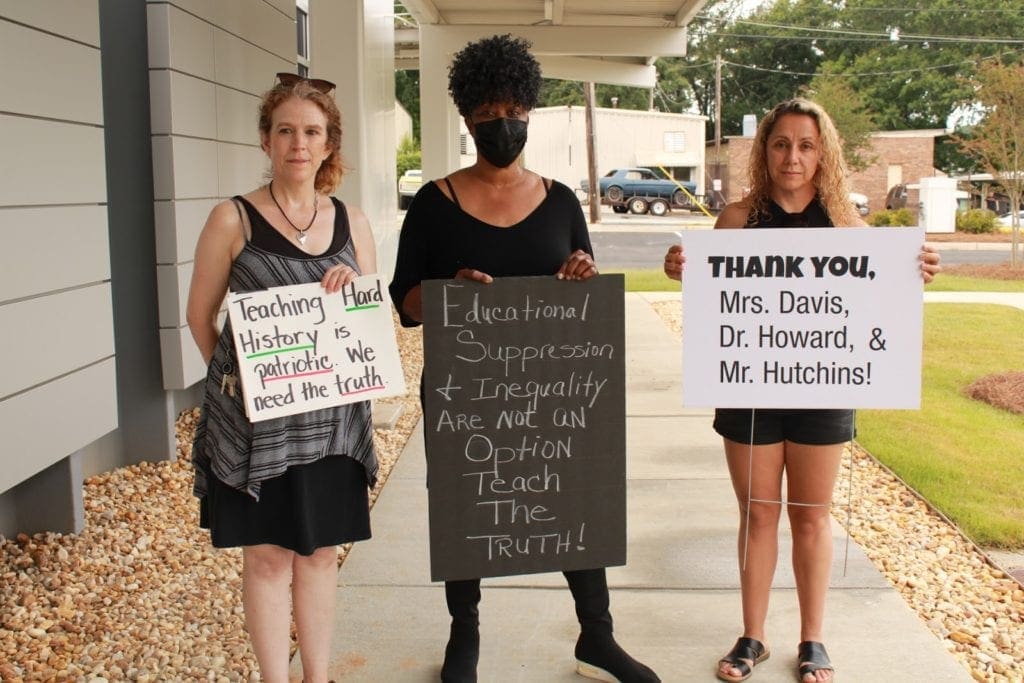
Protestors also emphasized that the crowd supports the three Black board members — Charisse Davis, Dr. Jaha Howard and Leroy “Tre” Hutchins — because they believe these board members are standing up to make Cobb schools safe for all students.
Rhonda Shepard, a Cobb parent, says that all three Democratic board members represent her but because of the rule stating items need a four-person majority to get on the agenda, it is difficult to talk about the issues of constituents who live in Democratic posts.
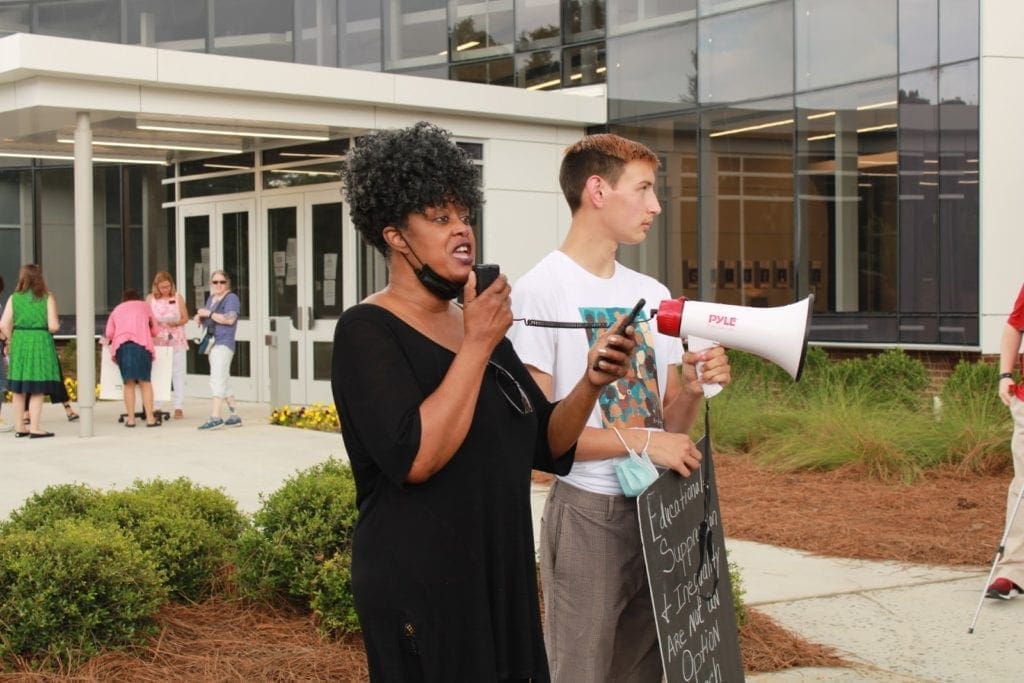
She said restrictive school board rules are disheartening for her as a taxpayer and as a person concerned about racism in Cobb schools.
A Cobb school counselor organized Thursday’s protest but due to the board’s new gag rule stating reporters have to go through the district’s communications office, the Courier could not speak with her or any of the current Cobb County School District employees at the protest.

During the demonstration, a few people opposed to teaching CRT confronted pro-CRT demonstrators about their views.
Christine Rozman, opposed to teaching CRT, said that implementing CRT practices is racism and a threat to Cobb schools as well as a wider threat to the US.
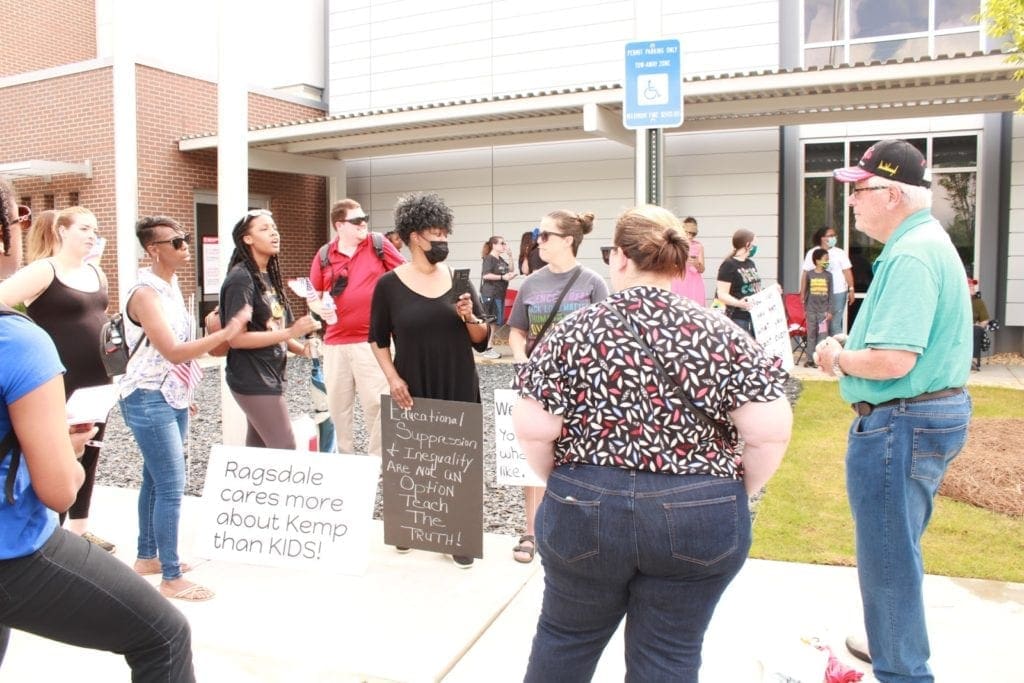

“It’s teaching the consciousness of socialism and Marxism,” Rozman said.
Critical race theory is not a Marxist doctrine, but rather, originated in the mid-1970s by scholars and legal experts of various racial backgrounds who believed that Civil Rights legislation was too “colorblind.”
CRT is not something that is taught, according to Oxford Research Encyclopedia.
It is a framework various institutions would use to analyze how systemic racism affects every aspect of said institution and attempt to fix it.
In addition to looking at race, CRT looks at how sexism, classism, homophobia, xenophobia and other discriminatory factors affect the country’s institutions.
Former Cobb educator Trudy Delhey said that CRT is necessary for a school district that is as diverse as Cobb schools.
Approximately 62 percent of students in the Cobb County School District are people of color, with Black kids making up the majority of that percentage, according to Public School Review.
The 62 percent is larger than the state-wide enrollment of people of color in public schools — which is 60 percent.
Delhey said that in 2019, 27 percent of Cobb students did not feel they were treated fairly at school because of their race, ethnicity or culture.
Delhey also drew attention to discipline rates which disproportionately affect Black students.
“So in 2019, 51.8 percent of the students disciplined in Cobb were Black,” Delhey said. “51.8 percent versus 20.4 percent white, 21.7 percent Hispanic.”
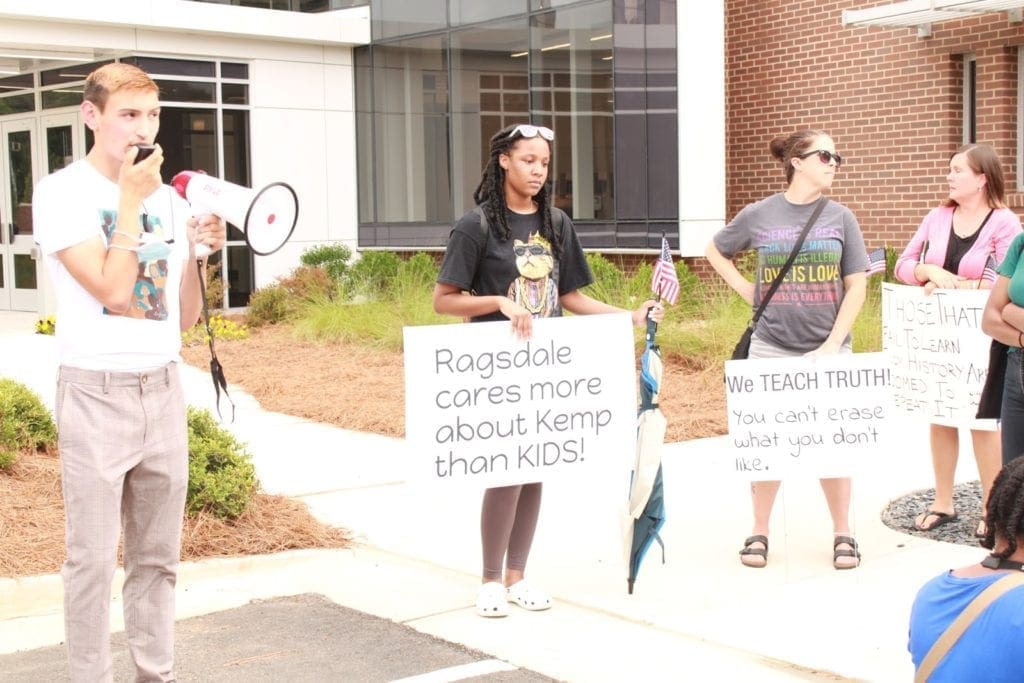
Reverend Deborah Bennett of the Emerson Unitarian Universalist Congregation said that as a white person it can be difficult to study the history of the racial horrors that may have been carried out by one’s ancestors.
Despite that, Bennett said that white people who are offended by CRT should take a step back and broaden the lens through which they have been taught history.
“And until we do that, we’re not going to be able to really move forward,” Bennett said. “And to pretend that racism doesn’t exist in this country, to pretend that we don’t live in a white supremacist culture is ludicrous.”
As the demonstration went on outside, inside the majority white and Republican-led school board voted to ban the teaching of CRT and the New York Times’ 1619 Project.
All three Democrats abstained from the decision.
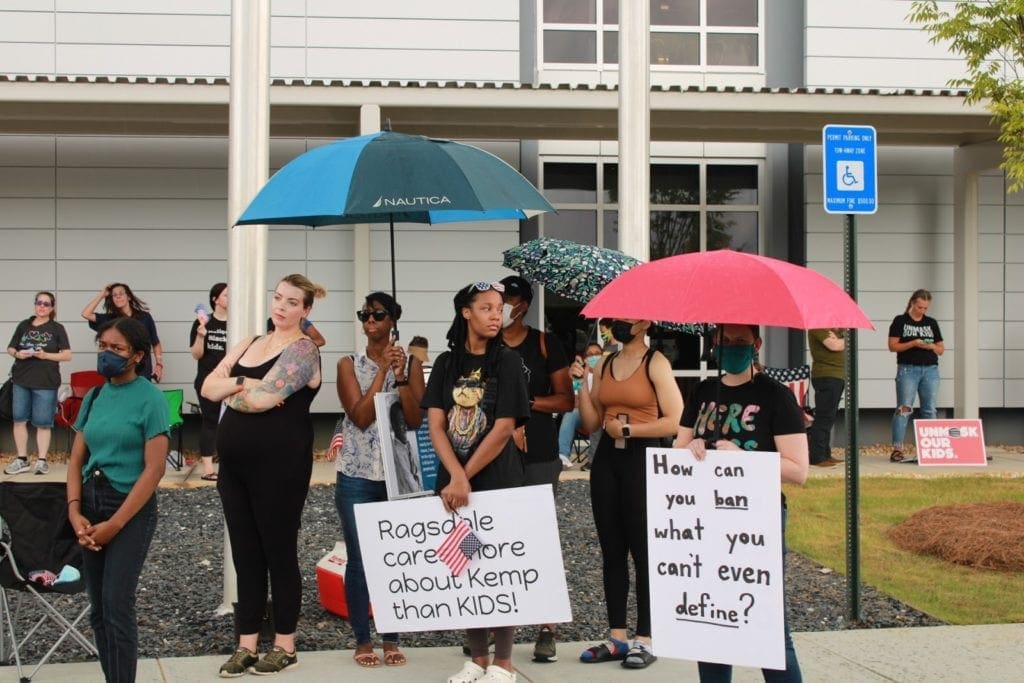
Notably, chairman and board member Randy Scamihorn could not define what CRT is but moved to ban it anyway.
The 1619 Project studies US history and how slavery has impacted all aspects of American life and institutions.
This ban makes Cobb the second school district in the state to ban CRT. Cherokee County schools were the first.
The Georgia Board of Education also recently passed a resolution condemning CRT.

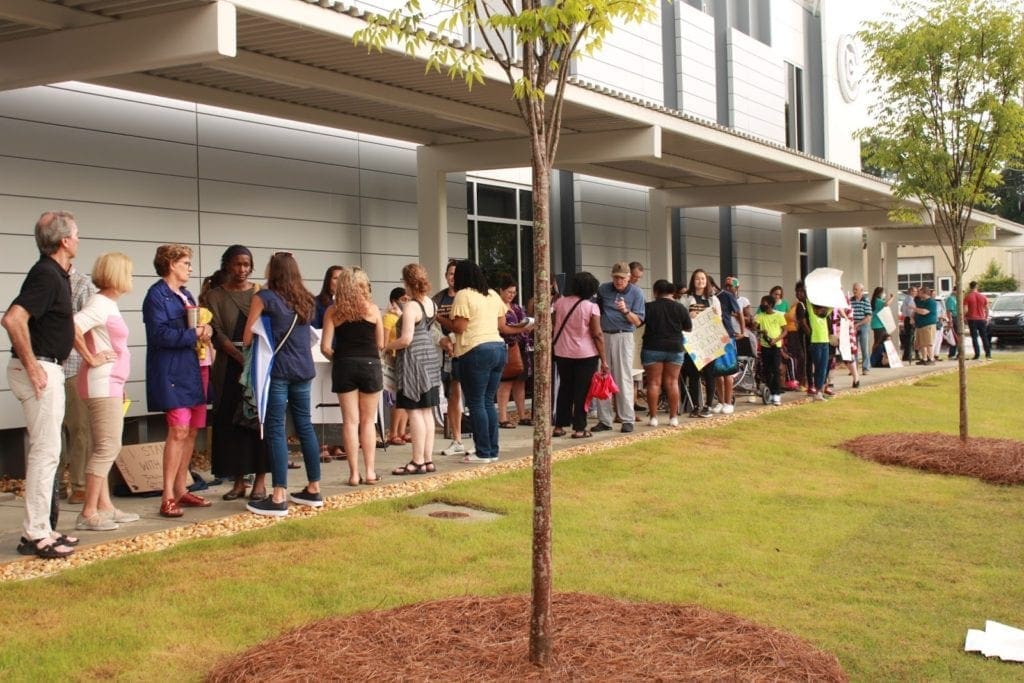
Towards the end of the demonstration, after the board passed the anti-CRT resolution, Heller told everyone that the protest is not a one-time event and resistance will keep happening until the school board listens to the voices of Black and Brown people in the school district.
“Black history is American history,” Heller said. “We need to teach it, we need to critically examine it and we need to come together and stick together. And that’s why we’re here. We need to put people on that board that care about all of our kids and students and families and parents. Not just three out of seven.”
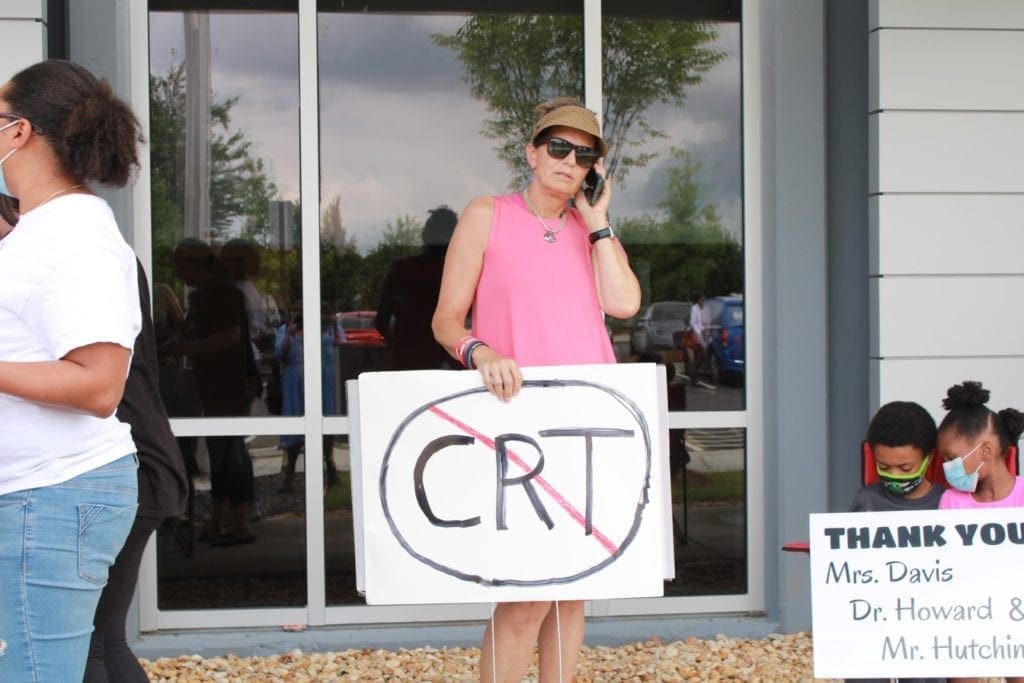

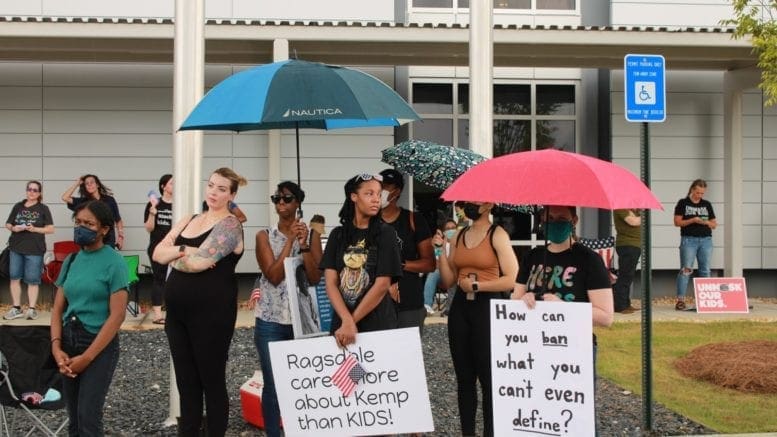
LMAO I see Cobb is keeping it’s tradition alive of demamding public schools teach psuedoscience.